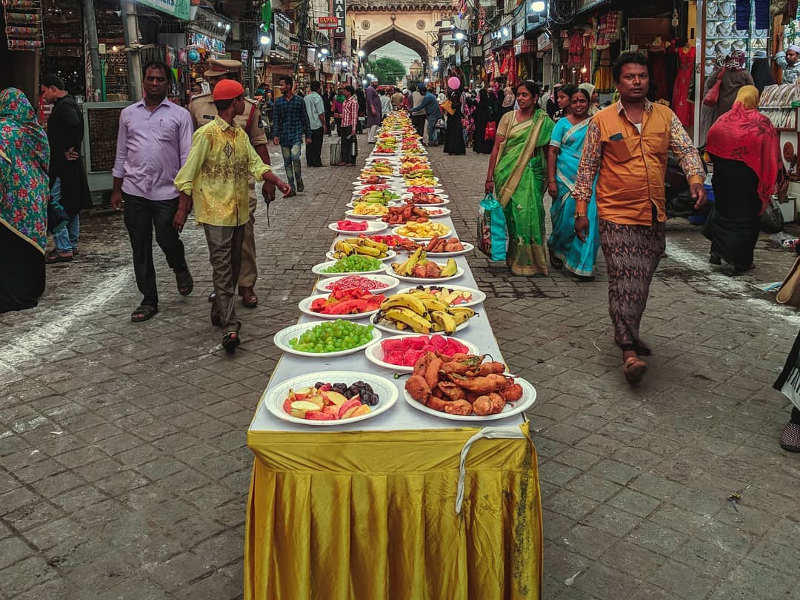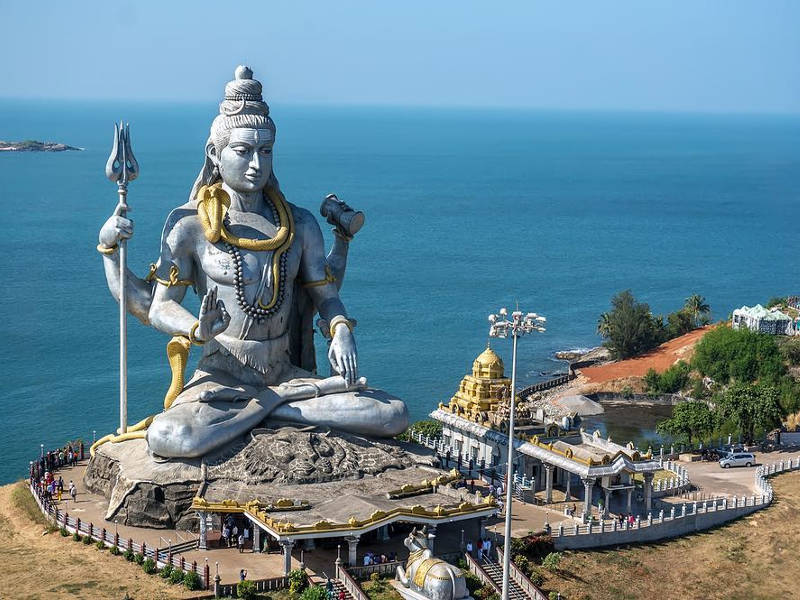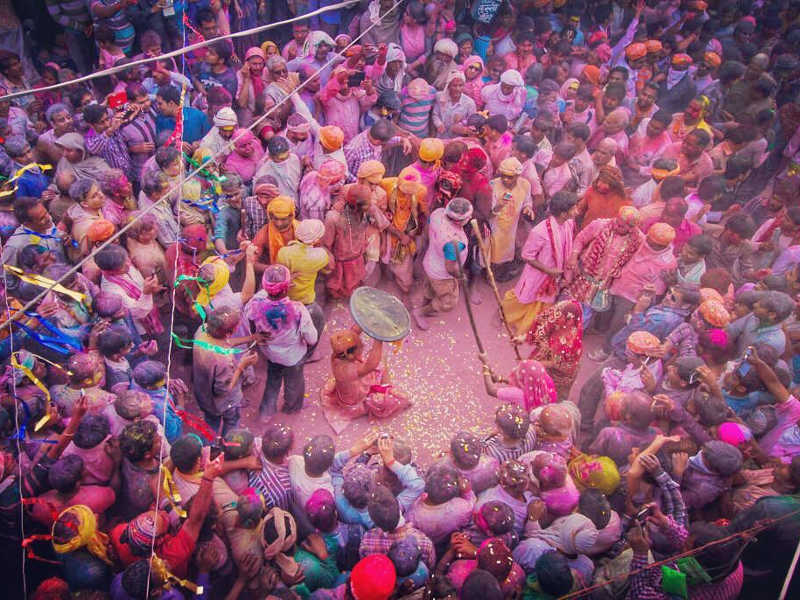India is a charming country abundant with beautiful natural attractions, epic views, historic and spiritual sights, including majestic temples. The best time to visit India’s central and southern regions is between November and March, while the north experiences optimal conditions between March-June and September-November. Each region is very different from each other, so take this into account when planning your trip. We’ve curated an informative guide on the best time to visit India, including its weather, daylight hours, flight prices and festivals.

Image courtesy of @independentt_traveller via Instagram
Weather
India has three distinct seasons, namely summer (March to May), winter (November to February) and the monsoon season (June to October). Make sure you’re thoroughly informed of the Indian region you’re visiting to get the best experience.
North
The Indian Himalayan region’s high altitude experiences a wide range of climates. It is possible to travel to the Himalayan foothills, including Darjeeling and Shimla, all year round. You’ll experience the coldest weather from December to January, with day temperatures reaching a mere 10°C. It is best to avoid altitudes higher than 1500m between December and February as temperatures can drop to below -5°C during these winter months and the roads are covered in snow. The best time to visit India’s Himalayan regions and foothills is from March to June and September to November.
Darjeeling and Shimla experience monsoon seasons. Expect heavy rain from June to September in Darjeeling, while Shimla’s monsoon season is much shorter, from July to August. If you’re willing to endure the rain, these hill stations can be a blissful encounter during the monsoon season as you’ll skip the touristic crowds and the emerald forests will reward your monsoon-trekking efforts with once in a lifetime views.
Average temperature & rainfall in The Himalayas:
| Month | Jan | Feb | Mar | Apr | May | Jun | Jul | Aug | Sep | Oct | Nov | Dec |
| Low°C | -7 | -7 | -3 | -1 | 7 | 11 | 13 | 12 | 7 | 4 | -1 | -5 |
| High°C | 1 | 2 | 6 | 9 | 16 | 20 | 22 | 20 | 16 | 10 | 4 | -1 |
| Rainfall (mm) | 50 | 40 | 60 | 40 | 50 | 80 | 80 | 90 | 70 | 90 | 70 | 50 |

Image courtesy of @denny_simon via Instagram
Central
Central India has a subtropical climate with notably dry, hot summers and sizzling temperatures, followed by the monsoon rains, and a cool and mostly dry winter. The best time to visit India’s central region is between November and March (winter) when the cooler winter months provide relief from the scorching summer temperatures. However, temperatures in the desert regions can drop tremendously at night in winter. Pack in warm clothing!
During the day, visit popular destinations in Madhya Pradesh when the sun is milder and pleasant weather is the norm. Winter is the best time to visit cities like Bhopal, Indore and Gwalior. Visit the region’s popular palaces, temples and forts. Breath-taking temples in Central India include Chintaman Ganesh Temple, Adinath Temple and Chaturbuj Temple.
The summer months between April and June bring unbearable maximum temperatures averaging 45°C and minimum rainfall. However, if you’re heading to Central India to spot beautiful tigers, March to June is the best time to go to the national parks, including Bandhavgarh National Park.
July welcomes the much-needed rain as the monsoon season begins. Greenery returns as the torrential rains replenish the arid plains in Central India. Most areas should be avoided during the monsoon season (June to September) as roads become difficult to drive on. However, this time allows you the opportunity to see gushing waterfalls in places like Chhattisgarh.
Average temperature & rainfall levels per month in Indore:
| Month | Jan | Feb | Mar | Apr | May | Jun | Jul | Aug | Sep | Oct | Nov | Dec |
| Low°C | 10 | 11 | 16 | 21 | 24 | 24 | 23 | 22 | 21 | 18 | 12 | 19 |
| High°C | 27 | 29 | 34 | 39 | 40 | 36 | 30 | 28 | 31 | 33 | 30 | 27 |
| Rainfall (mm) | 4 | 3 | 1 | 3 | 11 | 136 | 279 | 360 | 185 | 52 | 21 | 7 |

Image courtesy of @sureshkulur via Instagram
South
Southern India has a tropical climate. The region depends on the monsoon season for rainfall. Temperatures are hot year round and seldom drop below 22°C with peak temperatures between 28°C and 31°C. Temperatures can reach 34°C in the region’s hottest months of May and June. The best time to visit India’s southern region is in the winter months (November to February). Take note that peak season is between December and February. Winter offers tourists the chance to experience the cities with mild temperatures ranging between 20°C and 30°C. Breath-taking hill stations (elevated towns), including Munnar and Idukki, are much cooler than the rest of the region, you’ll need an extra layer of clothing for the night time and early mornings.
If you’re exploring the cities in southern India, avoid the hot summer months, as the temperatures can get uncomfortable for walking around.
The summer months, from March to May, are the best time to visit Kerala or Bandipur National Park in Karnataka for viewing elephants as they spend a lot of time at the watering holes.
Consider going to Goa during the monsoon season (if you dare) as the local people celebrate the bountiful downpour of rain. Attend Sao Joa Festival which takes place during June and features locals jumping into wells and colourful floats on the rivers.
Average temperature & rainfall in Goa:
| Month | Jan | Feb | Mar | Apr | May | Jun | Jul | Aug | Sep | Oct | Nov | Dec |
| Low°C | 20 | 20 | 23 | 26 | 28 | 27 | 26 | 26 | 27 | 25 | 23 | 21 |
| High°C | 31 | 31 | 33 | 33 | 33 | 32 | 30 | 30 | 31 | 33 | 34 | 32 |
| Rainfall (mm) | 68 | 68 | 73 | 79 | 82 | 81 | 79 | 79 | 81 | 77 | 73 | 70 |

Image courtesy of @surat_divine_city via Instagram
Daylight Hours
India generally experiences an average of 12 hours of daylight throughout the year in all the regions. In summer, sunrise usually occurs around 6:30 am and the sun sets around 18:30 pm, while in winter the sun rises at approximately 6:30 am and will set around 17:30 pm.
How Much are Flights to India?
Peak Season (December-February)
During the peak season, flights increase by 13% specifically in January and February. It is best to book your flights and accommodation at least 3 months in advance!
Shoulder Season (July-November & March-early April)
If you wish to save on flights and still experience cool weather without the monsoon humidity, consider travelling to India during the shoulder season. You’ll get to see India’s beautiful attractions without the flocking crowds and save on your holiday expenses. Save up to 12% on flights during the shoulder season.
Low Season (April-June)
You can expect fewer crowds and enjoy excellent discounts on accommodation prices. Save up to 14% on flights during the low season.
Find cheap flights to India with Travelstart!

Image courtesy of @via Instagram
Festivals in India
India celebrates epic festivals that encompass the spirit of the locals. When considering the best time to visit India, keep in mind which festivals you’d love to experience!
Bikaner Camel Festival (January)
The annual camel festival is held in the city of Bikaner. The festival celebrates the locals’ devotion to the camel. The Bikaner Camel Festival affords the perfect chance to experience Rajasthan state in all its wonderful desert glory.
Holi Festival of Colour (March)
The Holi Festival celebrates the arrival of spring and new beginnings. This 2-day festival includes rituals by a bonfire, and a free-for-all festival of colours, where people drench each other in vibrant powder paint. The festival brings the locals and tourists together, elated with smiles and joy.
Krishna Janmashtami (August – September)
This annual Hindu festival celebrates the birth of Lord Krishna. Locals create dance-drama enactments of the life of Lord Krishna where singing, fasting, a night-vigil and a festival on the following day is observed.
Ganesh Festival (August – September)
Celebrating the Hindu elephant-headed god, Ganesh, this festival sees humongous crafted statues of Ganesha. The statues are paraded through the streets where you can experience joyful dancing and singing.
Diwali (October – November)
Diwali is the Hindu festival of lights. It is one of the most important festivals in India and it symbolises the victory of light over darkness or good over evil. Diwali takes place over five days with each day symbolising a different meaning. India is an enigmatic destination with so many pleasures to reap on your journey to this wonderfully and spiritually bold country.

Image courtesy of @vigoronwheels via Instagram
India is an enigmatic destination with so many pleasures to reap on your journey to this wonderfully and spiritually bold country.
Now that you’re equipped with the best time to visit India, sign up to Travelsart’s newsletter and be the first to find out about incredible flight specials to India and other countries.
Have you travelled to India? We’d love to know how amazing your experience was in the comments below.